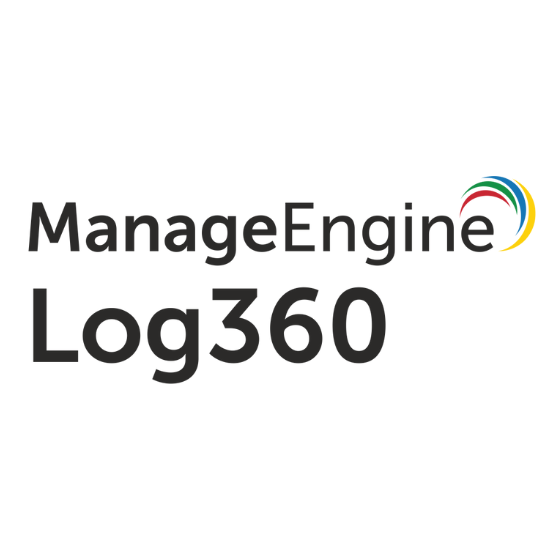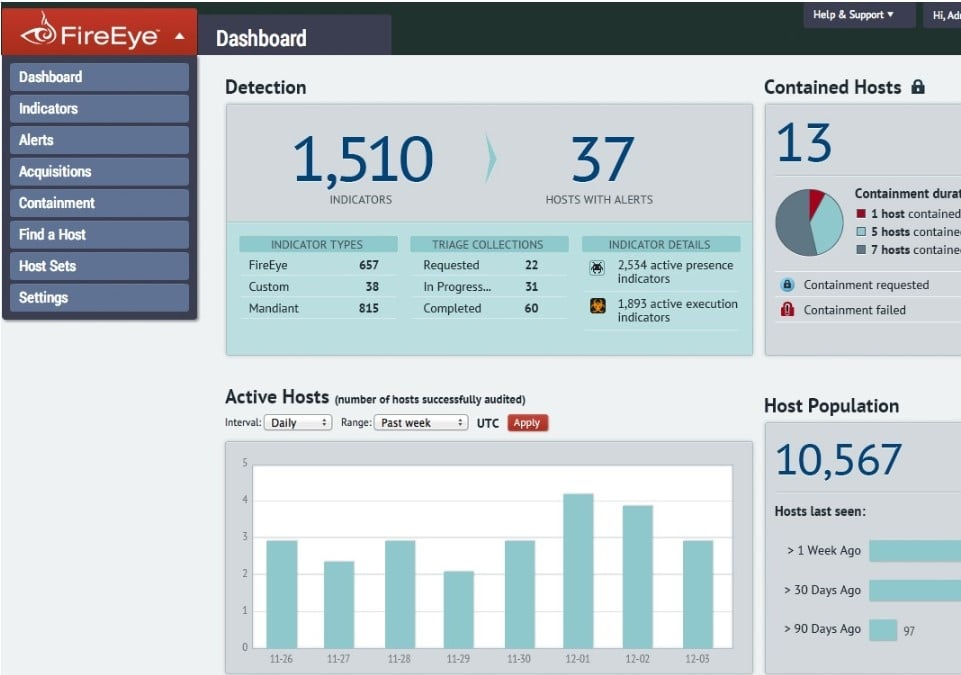Best Intrusion Detection Software Shortlist
Here’s my shortlist of the best intrusion detection software:
Our one-on-one guidance will help you find the perfect fit.
The best host intrusion detection software helps teams monitor system activity, flag unauthorized access attempts, and catch suspicious behavior before it escalates into a breach.
If you’re dealing with inconsistent logging, unclear alerts, or trying to spot threats across mixed environments, these tools help by watching system-level activity on endpoints, servers, and critical infrastructure. Problems like missed lateral movement, gaps in log correlation, and alert fatigue often drive teams to find a better solution.
I’ve worked with security teams implementing HIDS across Linux and Windows environments, including setups with hybrid cloud infrastructure and compliance needs. I’ve tested tools for detection accuracy, log clarity, and how well they integrate with existing SIEM and EDR tools.
This guide breaks down the platforms that offer reliable detection, clear reporting, and features that help teams move from reactive to proactive security.
What Is An Intrusion Detection Software?
Intrusion detection software is used to monitor networks or systems for suspicious behavior and known threats. IT admins, security engineers, and compliance teams use these tools to spot unusual activity early and limit the damage of potential breaches.
Log analysis, real-time alerts, and threat signature detection help with finding vulnerabilities, responding faster, and keeping systems in check. These tools help teams stay ahead of problems by flagging issues before they turn into real damage.
Best Intrusion Detection Software Summary
| Tool | Best For | Trial Info | Price | ||
|---|---|---|---|---|---|
| 1 | Best for user and entity behavior analytics | Free demo available | Pricing upon request | Website | |
| 2 | Best for centralized event management | 30-day free trial | From $2,877/year | Website | |
| 3 | Best for versatility in threat detection | Not available | Pricing upon request | Website | |
| 4 | Best for advanced threat intelligence | Not available | Pricing upon request | Website | |
| 5 | Best for integrated threat intelligence | Not available | Pricing upon request | Website | |
| 6 | Best for system integrity monitoring | Free demo available | Pricing upon request | Website | |
| 7 | Best for multi-layered security strategies | Not available | Pricing upon request | Website | |
| 8 | Best for real-time incident response | Not available | Pricing upon request | Website | |
| 9 | Best for open-source enthusiasts | Free demo available | From $29.99/year (billed annually) | Website | |
| 10 | Best for targeted attack identification | Not available | Pricing upon request | Website |
-

Docker
Visit WebsiteThis is an aggregated rating for this tool including ratings from Crozdesk users and ratings from other sites.4.6 -

Pulumi
Visit WebsiteThis is an aggregated rating for this tool including ratings from Crozdesk users and ratings from other sites.4.8 -

GitHub Actions
Visit Website
Best Intrusion Detection Software Reviews
ManageEngine Log360 is a comprehensive security information and event management (SIEM) solution designed to enhance organizational security by integrating essential capabilities such as User and Entity Behavior Analytics (UEBA), Data Loss Prevention (DLP), and Cloud Access Security Broker (CASB).
Why I Picked ManageEngine Log360: Log360 aggregates data from various sources, including Intrusion Detection Systems (IDS), firewalls, and Active Directory, to provide immediate alerts on potential intrusions. The platform also leverages advanced analytics and machine learning to detect anomalous behavior, which is essential for identifying insider threats and sophisticated cyber-attacks that traditional methods might miss. The UEBA feature also uses machine learning to identify unusual patterns and behaviors, providing deeper insights into potential security threats.
Standout features & integrations:
The platform's integrated compliance management ensures that organizations meet regulatory requirements, providing real-time notifications of compliance violations. It also offers automated incident response workflows to simplify the process of addressing security incidents. Integrations include Microsoft Exchange, Amazon Web Services (AWS), Microsoft Entra ID, Microsoft Azure, and Active Directory.
Pros and cons
Pros:
- Provides real-time monitoring and alerting
- Effective for auditing all IT levels in an organization
- Excellent visibility across systems
Cons:
- Potential performance issues with large data volumes
- Initial setup can be complex
Best for centralized event management
SolarWinds Security Event Manager (SEM) is designed to simplify the process of identifying and responding to security threats, failed audits, and operational issues. The tool stands out for its ability to centralize and interpret high volumes of log data from multiple sources.
Why I Picked SolarWinds Security Event Manager: During my evaluation, SolarWinds SEM's approach to centralizing events caught my attention. In my judgment, and after comparing it with several other platforms, I determined that it offers a differentiated and efficient solution for organizations that grapple with data sprawl. Its prowess in centralized event management makes it an invaluable tool for many security professionals.
Standout features & integrations:
The core strength of SolarWinds SEM lies in its log correlation technology, which quickly pinpoints potential issues by analyzing patterns. Additionally, its integrations with other SolarWinds products allow organizations to have a broader, more holistic view of their IT environments.
Pros and cons
Pros:
- Supports numerous device and application logs
- Streamlined event visualization tools
- Efficient log correlation capabilities
Cons:
- Some users report performance lags with high data volumes
- Reporting capabilities may need enhancements
- The learning curve for new users
Juniper IDP is known for its extensive threat detection methodologies, making it a preferred choice for organizations that require varied approaches to safeguard their digital infrastructure. Its ability to adapt to different threat landscapes proves it's truly built for versatile detection.
Why I Picked Juniper IDP: In the process of selecting a tool that offers a broad spectrum of threat detection techniques, Juniper IDP emerged as a prominent security software contender. The versatility it exhibited in its detection methods compared favorably against its peers. For organizations that face multifaceted threat vectors and need a flexible solution, I believe Juniper IDP fits the bill.
Standout features & integrations:
Juniper IDP boasts signature-based, anomaly-based, and behavior-based detection techniques, offering a layered defense strategy. It integrates effectively with Juniper's broader security portfolio, ensuring a more cohesive approach to threat management.
Pros and cons
Pros:
- Customizable detection rules for specialized environments
- Integration within Juniper's ecosystem
- Comprehensive threat detection methodologies
Cons:
- Software updates may occasionally disrupt configurations
- Potential for false positives with aggressive settings
- Requires a steep learning curve for maximum efficiency
FireEye Network Security serves as a comprehensive platform that focuses on advanced threat detection, prevention, and investigation. What differentiates this tool is its rich threat intelligence, offering insights that many other platforms might miss.
Why I Picked FireEye Network Security: After deliberating on various security platforms and their offerings, I gravitated towards FireEye due to its renowned advanced threat intelligence capabilities. I believe that in the evolving threat landscape, FireEye's approach to detecting and tackling sophisticated threats places it ahead of many competitors.
Standout features & integrations:
FireEye's strength is its MVX architecture which identifies and blocks complex threats in real-time. Furthermore, its integration capabilities with third-party solutions make it versatile in diverse IT environments.
Pros and cons
Pros:
- Ability to sandbox suspicious content for analysis
- Comprehensive threat analytics and reporting
- Strong emphasis on zero-day and new threat vectors
Cons:
- Requires careful configuration for optimal results
- May generate false positives if not tuned properly
- Can be resource-intensive
McAfee's IDS rises above by not just detecting intrusions but by providing integrated threat intelligence to inform timely countermeasures. This integration results in an enriched understanding of threats, placing it high on the list for businesses prioritizing intelligence-driven defense.
Why I Picked IDS by McAfee: Upon comparing various tools, the intelligence fusion within McAfee's IDS caught my attention. This integration, a differentiator in its league, led me to judge it superior for those keen on coupling detection with actionable intelligence. If integrated threat insights are the goal, IDS by McAfee aligns perfectly with such demands.
Standout features & integrations:
McAfee's IDS takes pride in its adaptive threat detection mechanisms, refining its processes with real-time intelligence feeds. Its cloud-based analytics further elevate its detection accuracy. For integrations, it pairs effectively with other McAfee security products and a range of third-party SIEM systems.
Pros and cons
Pros:
- Wide-ranging compatibility with SIEM solutions
- Cloud-enhanced analytics for precise detection
- Real-time threat intelligence integration
Cons:
- Licensing complexities for expansive deployments.
- Reliance on the cloud may not suit all organizations
- Some learning curve for full feature utilization
Tripwire is a renowned security solution, primarily recognized for its system integrity monitoring capabilities. It helps organizations maintain their system's integrity by continuously monitoring and detecting changes that could indicate potential breaches.
Why I Picked Tripwire: In the process of selecting a tool for reliable system integrity monitoring, Tripwire immediately stood out. I determined its prowess in this area by comparing its features and reviews against other competitors. Given the increasing importance of system integrity in today's dynamic cyber landscapes, Tripwire is best suited for organizations prioritizing this aspect.
Standout features & integrations:
Tripwire's key strength lies in its file integrity monitoring, which is adept at detecting unauthorized changes in real-time. Furthermore, its integration with popular SIEM tools enhances its monitoring capabilities, allowing for a more holistic security overview.
Pros and cons
Pros:
- Integrates well with many SIEM tools
- Supports regulatory compliance needs
- Efficient real-time change detection
Cons:
- The licensing model may be confusing for some users
- Might generate false positives if not tuned properly
- Configuration can be complex for beginners
Check Point IDS operates as an integral component of Check Point's comprehensive security suite, emphasizing a multi-layered approach to threat mitigation. This approach ensures that threats, regardless of their origin or nature, are tackled at various levels, providing robust protection.
Why I Picked Check Point IDS: My judgment was steered towards Check Point IDS after observing its holistic, multi-layered defense mechanism. After determining its performance and comparing it with other tools, I concluded that for organizations seeking a multi-tiered security strategy, Check Point IDS would be a commendable choice.
Standout features & integrations:
Check Point IDS excels in its threat prevention technologies, which encompass intrusion prevention, antivirus, and anti-bot modules. Additionally, its integration with Check Point's security gateway broadens the scope of protection.
Pros and cons
Pros:
- Regularly updated with the latest threat intelligence
- Part of the broader Check Point security ecosystem
- Comprehensive multi-layered threat prevention
Cons:
- Licensing can be complex with various modules and features.
- The user interface might be overwhelming for newcomers
- Requires dedicated hardware for optimal performance
RSA NetWitness stands out for its prowess in facilitating prompt reactions to security breaches. Its design focuses on accelerating the response time from the moment an incident is detected, aligning it well with real-time incident management demands.
Why I Picked RSA NetWitness: The need for rapid incident response led me to evaluate several solutions, and RSA NetWitness presented a superior capability in this regard. Its emphasis on real-time monitoring and swift response mechanisms was a determining factor in my selection. For teams that prioritize instantaneous action upon breach detection, RSA NetWitness appears to be the prime choice.
Standout features & integrations:
At the heart of RSA NetWitness lies its real-time analytics engine, geared towards immediate incident insights. Moreover, its integration capabilities encompass a vast array of third-party tools, enhancing its situational awareness and response speed.
Pros and cons
Pros:
- User-friendly interface for streamlined incident management
- Broad integration capabilities with third-party tools
- Focused real-time analytics for swift incident insights
Cons:
- Network traffic-heavy operations might demand robust hardware configurations.
- Advanced features require dedicated training sessions
- Pricing might be on the higher side for smaller entities
Snort stands as one of the pioneers in intrusion detection, with its robust and open-source nature allowing for in-depth network protection. Catering to those who value transparency and customization, Snort's open-source model offers users a direct line of sight into its inner workings, making it a prime choice for enthusiasts.
Why I Picked Snort: I chose Snort because, in my journey of comparing various intrusion detection tools, its open-source nature stood out. This tool has garnered respect and loyalty in the cybersecurity community for its adaptability and transparency. Given its commitment to providing a platform that enthusiasts can both trust and tinker with, I determined that Snort is best for those who deeply value open-source paradigms.
Standout features & integrations:
Snort's rule-driven language allows users to fine-tune detection protocols, while its capabilities in real-time traffic analysis ensure timely insights into network activity. Beyond its core features, Snort integrates well with other security platforms and databases, enhancing its usability and scope within larger cybersecurity frameworks.
Pros and cons
Pros:
- Real-time traffic analysis captures anomalies swiftly
- Rule-driven language for tailored detection
- The open-source nature ensures transparency
Cons:
- Lacks a graphical user interface out of the box.
- Regular updates might demand frequent configuration tweaks
- Initial setup can be complex for novices
Trend Micro Deep Discovery is a dedicated solution designed to detect, analyze, and respond to today's stealthy ransomware, its variants, and targeted attacks. The tool's specialization in uncovering targeted and sophisticated threats sets it apart in the security landscape.
Why I Picked Trend Micro Deep Discovery: My decision to highlight Trend Micro Deep Discovery was influenced by its focused approach to targeted threat detection. After comparing and assessing several solutions, I was convinced that its ability to identify concealed attacks gives organizations a significant upper hand.
Standout features & integrations:
Deep Discovery excels in its specialized detection engines and custom sandbox analysis. Its integrations with other Trend Micro solutions provide layered security and enhanced visibility across the digital environment.
Pros and cons
Pros:
- Supports a wide range of virtual and physical network appliances
- Offers in-depth threat insights and intelligence
- Specialized in detecting hidden threats
Cons:
- May require additional resources for larger networks.
- Licensing model may be complicated for some users
- Can be complex to set up initially
Other Notable Intrusion Detection Software
Below is a list of additional intrusion detection software that I shortlisted, but did not make it to the top 10. Definitely worth checking them out.
- Cisco IDS
For large enterprise environments
- Ossec
For log management and analysis
- Zeek
For network traffic analysis
- Fidelis Network
Good for deep session inspection
- Ntopng
Good for network traffic insights
- WatchGuard Network Security
Good for modular security solutions
- Nagios Core
Good for infrastructure monitoring
- BluVector
Good for machine learning threat detection
- Suricata
Good for high-performance network IDS, IPS, and network security monitoring
- Security Onion
Good for intrusion detection, enterprise security monitoring, and log management
- Kismet
Good for wireless network detection
- LogRhythm
Good for comprehensive log management
- Darktrace
Good for AI-driven threat detection
- Fortinet FortiGate
Good for broad security integrations
- Hillstone Network-Based IDS
Good for layered threat prevention
Other Intrusion Detection-Related Software Reviews
- Intrusion Prevention Software
- Endpoint Protection Software
- Intrusion Detection and Prevention Systems
Selection Criteria For Choosing Intrusion Detection Software
I've evaluated dozens of network security and intrusion detection system (IDS) tools over the years. While many of these tools possess great features, it's crucial to understand what's truly important based on specific needs and the unique challenges that come with network security. For this list, I particularly sought tools with high detection accuracy, scalability, and easy-to-use interfaces.
Core Functionality
- Threat Detection: Accurate identification of both known and zero-day threats in real-time.
- Intrusion Prevention: Not just detection, but the ability to prevent identified threats.
- Data Analysis: Analyze network traffic for abnormal patterns, which could indicate a potential threat.
- Alerting and Reporting: Real-time alerts for threats and comprehensive reporting for analysis.
Key Features
- Machine Learning and AI Capabilities: Enables the tool to evolve with emerging threats and recognize patterns in the data.
- Integration with other Security Tools: It's important for IDS tools to work cohesively with other security solutions in an organization's ecosystem.
- Customizable Alert Settings: Adjust sensitivity based on the network environment to minimize false positives.
- Encrypted Traffic Inspection: Analyze encrypted data packets without compromising security.
- Threat Intelligence Feed: Updated information about emerging threats, providing the tool with current data.
Usability
- Intuitive Dashboard: The main console should provide a clear overview of the network's security status, including threats detected, traffic patterns, and system health.
- Drag-and-drop Rule Configuration: Rather than complex coding, a user-friendly interface for rule setting helps in quicker configuration and deployment.
- Role-Based Access Control: Essential for larger teams, this allows specific permissions to be set for different users, ensuring that only authorized personnel can make changes or access sensitive information.
- Learning Resources and Support: Given the complexity of some of these tools, having accessible training resources, documentation, and responsive customer support is paramount.
Most Common Questions Regarding Intrusion Detection Software (FAQs)
What are the benefits of using intrusion detection software?
Intrusion detection software offers a wide range of benefits, including:
- Enhanced Security: These tools constantly monitor network traffic for any signs of malicious activity, ensuring that potential threats are identified swiftly.
- Real-time Alerting: Immediate alerts help organizations act quickly, minimizing potential damage.
- Compliance: Many industries have regulations requiring organizations to monitor and protect their networks. IDS tools can help meet these regulatory requirements.
- Detailed Reporting: Organizations can analyze and learn from security incidents, refining their security posture over time.
- Integration with Other Systems: Most IDS solutions can integrate with other security tools, creating a comprehensive security environment.
How much do intrusion detection software tools typically cost?
The pricing for intrusion detection software can vary significantly based on features, scalability, and brand reputation. Most solutions operate on a subscription model, charging monthly or annually.
What are the common pricing models for these tools?
There are several pricing models:
- Per User/Device: Pricing is based on the number of users or devices connected to the network.
- Data Volume: Some tools charge based on the amount of data they analyze.
- Flat Rate: A standard fee that covers all features and capabilities.
- Freemium: A basic version is available for free, with more advanced features available at a cost.
What's the typical range of pricing for these tools?
Prices can range from as low as $10/user/month for smaller solutions to upwards of $1,000/month for enterprise-grade systems. It’s essential to consider both the immediate needs and the scalability when determining which solution offers the best value.
Which are some of the cheapest software options available?
Kismet and Nagios Core are among the more affordable options in the intrusion detection space, especially suitable for small to medium-sized businesses.
Is there any high-end, premium-priced software?
Yes, tools like Darktrace and FireEye Network Security are on the higher end of the spectrum, catering primarily to larger enterprises with complex requirements.
Are there any free IDS software options?
Indeed, there are free options available, such as Kismet and Nagios Core. However, while these tools offer essential IDS features, they might lack some of the more advanced functionalities found in paid versions.
Is it worth investing in a premium tool?
For organizations with sensitive data or those in highly regulated industries, a premium IDS tool might be a worthy investment. These tools often come with superior detection capabilities, better integration options, and top-notch support, which can be crucial in a high-stakes security scenario.
Summary
Choosing the right network intrusion detection system (NIDS) is paramount for organizations to effectively monitor and safeguard their network infrastructure. Throughout this guide, we've highlighted the significance of such tools, detailing their core functionalities, key features, usability, and varying pricing models. As cyber threats continue to evolve, having a robust intrusion detection system becomes an indispensable part of an organization's defense strategy.
Key Takeaways:
- Prioritize Core Functionality: Always ensure that the software you choose aligns with your primary security objectives and can effectively monitor and detect threats in real-time.
- Consider Usability and Support: Beyond features, the tool's design, ease of onboarding, and the quality of customer support can significantly impact its efficacy. An intuitive interface and prompt support can enhance the software's overall effectiveness.
- Understand Pricing Models: With a wide range of pricing models available, from per user/device to data volume and flat rates, it's essential to select a model that offers value while fitting into your budget.
What Do You Think?
While I've endeavored to provide a comprehensive list of top-notch intrusion detection software, the world of cybersecurity is vast and ever-evolving. If there's a tool you believe should be on this list or if you've had positive experiences with a product not mentioned, I'd love to hear from you. Your insights not only benefit me but also help our reader community make more informed decisions. Please share your recommendations and together, let's create a more secure digital landscape.
























